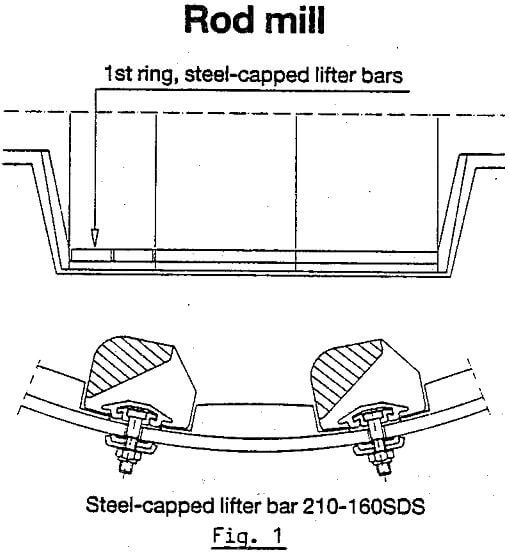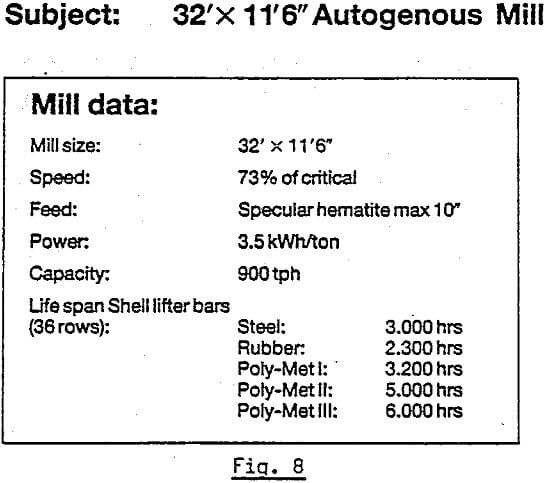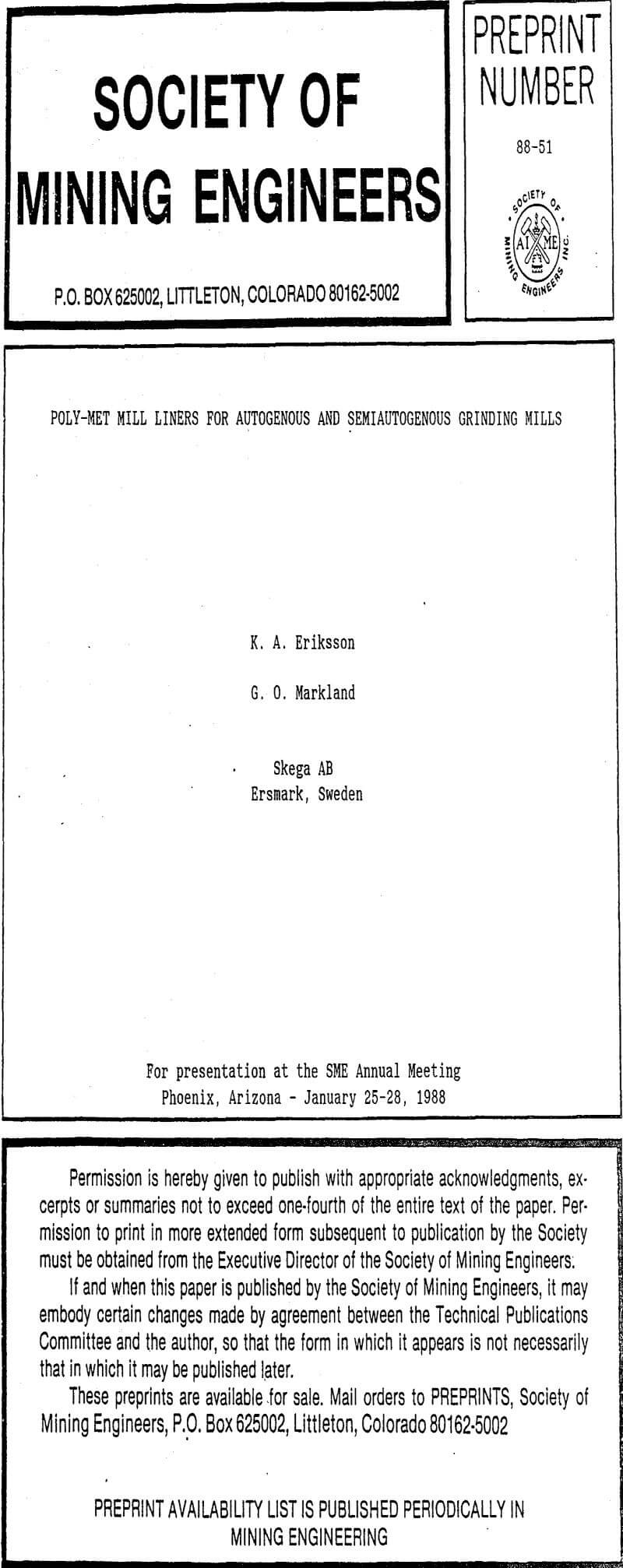Over 25 years ago, SKEGA pioneered the use of rubber linings in grinding mills and rubber is today widely accepted and almost standard material chosen for Regrind and Secondary Mills. There are, however, only a few Primary Mills in operation with “solid” rubber linings because available materials and designs are often not cost efficient in comparison with steel alloys on a cost per ton basis and/or downtime for liner replacement would be too high.

Apart from reduced liner cost, the most important consequence of this is that mill availability will be increased considerably, up to 200 hrs/year. As an example: Improved availability from 93% to 95% (common potential) means 175 hrs more production or another 70 000 tpy if capacity is 400 tph. What is that worth? At least when grinding ore containing precious metals, this is worth more than the lining in the primary mill.

As far as design is concerned, every mill with its working conditions is unique, so consequently a tailor-made detailed design is necessary for each specific case once all information about technical and operational data is established.
The choice of steel alloys is the key issue in this concept and the test program has been concentrated around the subject. On SAG grinding there is of course a limit in hardness even if the rubber embedment results in the fact that harder steel alloys can be used.

